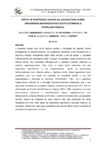Por favor, use este identificador para citar o enlazar este ítem:
http://www.alice.cnptia.embrapa.br/alice/handle/doc/916982Registro completo de metadatos
| Campo DC | Valor | Lengua/Idioma |
|---|---|---|
| dc.contributor.author | GUIMARÃES, M. | pt_BR |
| dc.contributor.author | PELEGRINI, M. D. B | pt_BR |
| dc.contributor.author | PAULA, V. J. de | pt_BR |
| dc.contributor.author | JONSSON, C. M. | pt_BR |
| dc.contributor.author | CASTRO, V. L. S. S. de | pt_BR |
| dc.date.accessioned | 2012-02-29T11:11:11Z | pt_BR |
| dc.date.accessioned | 2012-02-29T11:11:11Z | pt_BR |
| dc.date.available | 2012-02-29T11:11:11Z | pt_BR |
| dc.date.available | 2012-02-29T11:11:11Z | pt_BR |
| dc.date.created | 2012-02-29 | pt_BR |
| dc.date.issued | 2011 | pt_BR |
| dc.identifier.citation | In: CONGRESSO INTERINSTITUCIONAL DE INICIAÇÃO CIENTÍFICA, 5., 2011, Campinas. Anais... Campinas: Embrapa Monitoramento por Satélite, 2011. 1 CD ROM. | pt_BR |
| dc.identifier.uri | http://www.alice.cnptia.embrapa.br/alice/handle/doc/916982 | pt_BR |
| dc.description | Resumo: O presente estudo teve como objetivo avaliar a toxicidade de agentes tóxicos isoladamente ou simultaneamente. Os compostos estudados foram diflubenzurom e parationa metílica. Inicialmente foram feitos estudos a fim de avaliar a toxicidade individualmente em organismos teste. A seguir, foi avaliada a ação conjunta de uma mistura binária dos compostos diflubenzurom e parationa metílica utilizando os mesmos organismos-testes. Para tanto, os testes foram realizados com dois organismos planctônicos e um fitoplanctonicos, sendo os planctônicos microcrustáceos como Artemia salina e Daphnias similis. Estes organismos foram escolhidos pela sua ampla na avaliação de toxicidade devido a sua fácil disponibilidade e obtenção de neonatos (VANHAECKE, 1981). Já o organismo fitoplanctônico utilizado foi a microalga Pseudokirchneriella subcapitata, que é uma alga verde unicelular.Os compostos testados, conforme os valores de CE50 - 48h e a classificação da Environmental Protection Agency (EPA, 1985), apresentam-se como extremamente, altamente e moderadamente tóxicos, respectivamente, para diflubenzurom, a mistura diflubenzurom (50%) + parationa metílica (50%) e a parationa metílica. Apesar da avaliação da ação conjunta dos dois inseticidas ser ainda necessária em uma maior gama de organismos aquáticos e períodos maiores, os resultados obtidos são úteis para a ampliação da base de dados sobre interações de poluentes em organismos não-alvo. Abstract: The present study aimed to evaluate the toxicity of toxic agents alone or simultaneously. The compounds studied were Diflubenzurom and methyl-parathion. Initially studies were conducted to evaluate the toxicity of individual test organisms. Following, we assessed the joint action of a binary mixture of compounds and methyl- parathion Diflubenzurom using the same test organisms. To this end, two tests were performed with planktonic organisms and phytoplankton, and the planktonic microcrustaceans as brine shrimp and Daphnia similis. These organisms were chosen for their broad assessment of toxicity due to its easy availability and obtaining neonates (VANHAECKE, 1981). The phytoplankton organism utilized was microalgae Pseudokirchneriella subcapitata, which is a unicellular green alga. The compounds tested, as the EC50 values-48 h and the classification of 'Environmental Protection Agency (EPA, 1985), present themselves as extremely highly, and moderately toxic, respectively, for diflubenzurom, the mixture (50%) + diflubenzurom parationa, via methylic (50%) and the parationa methylic route. The results are useful for increasing database on interactions of pollutants on non- target organisms, however the evaluation of the action of two insecticides on a greater range of aquatic organisms and a longer period would be required. | pt_BR |
| dc.language.iso | por | pt_BR |
| dc.rights | openAccess | pt_BR |
| dc.subject | Organismos bioindicadores | pt_BR |
| dc.title | Efeito de inseticidas usados na aquicultura sobre organismos bioindicadores zooplactônicos e fitoplanctônicos. | pt_BR |
| dc.type | Artigo em anais e proceedings | pt_BR |
| dc.date.updated | 2015-10-15T11:11:11Z | pt_BR |
| dc.subject.thesagro | Inseticida | pt_BR |
| dc.subject.thesagro | Impacto ambiental | pt_BR |
| dc.subject.thesagro | Zooplâncton | pt_BR |
| dc.subject.thesagro | Aquicultura | pt_BR |
| dc.subject.nalthesaurus | Insecticides | pt_BR |
| dc.subject.nalthesaurus | Environmental impact | pt_BR |
| dc.subject.nalthesaurus | Aquaculture | pt_BR |
| riaa.ainfo.id | 916982 | pt_BR |
| riaa.ainfo.lastupdate | 2015-10-15 | pt_BR |
| dc.contributor.institution | MARJORIE GUIMARAES, Metrocamp Veris IBTA; MARINA DAL'BÓ PELEGRINI, IB-UNICAMP; VERONICA J. DE PAULA, Metrocamp Veris IBTA; CLAUDIO MARTIN JONSSON, CNPMA; VERA LUCIA SCHERHOLZ S DE CASTRO, CNPMA. | pt_BR |
| Aparece en las colecciones: | Artigo em anais de congresso (CNPMA)  | |
Ficheros en este ítem:
| Fichero | Descripción | Tamaño | Formato | |
|---|---|---|---|---|
| 2011AA47.pdf | 59,74 kB | Adobe PDF |  Visualizar/Abrir |









